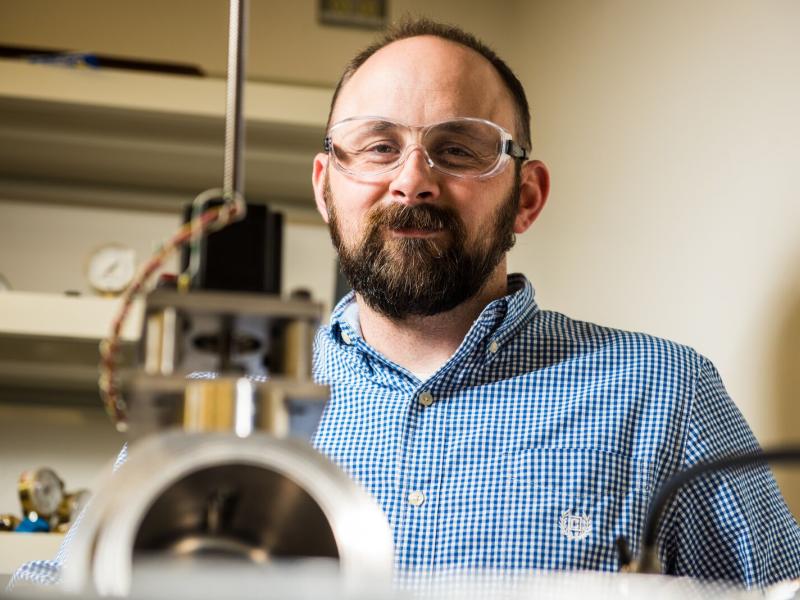
Subsurface
Energy Systems
Subsurface
Energy Systems
Research for more efficient
development and use of
fossil energy resources
Research for more efficient
development and use of
fossil energy resources
The X-ray diffractometer (XRD) is capable of examining materials under extreme conditions.
Andrea Starr | Pacific Northwest National Laboratory
To develop transformational technologies for subsurface energy systems, researchers need a deeper understanding of the chemical and physical interactions between formation fluids, reservoir rock, overburden, and injected materials. Quantifying these processes enables more efficient, reservoir-specific strategies for oil and gas production, geologic carbon dioxide (CO2) storage, and hybrid technologies that utilize CO2 to enhance hydrocarbon resource recovery.
PNNL’s subsurface work—on behalf of the DOE Office of Fossil Energy and Carbon Management (DOE-FECM)—includes development of:
- engineered, reservoir-specific solvents to increase oil and gas recovery rates;
- novel materials and processes for more effective reservoir stimulation; and
- integrated modeling and monitoring suites to provide operational intelligence for optimizing subsurface project performance.
Storage and Utilization of CO2 in the Subsurface
Injecting CO2 underground to permanently isolate it from the atmosphere is sometimes referred to as carbon capture and geologic storage or CCS. PNNL’s expertise in this area dates back to the 1990s and includes work across all scales, from molecular dynamics to pilot demonstration and development of tools to support permitting of commercial-scale CCS projects.
PNNL has served a leadership role in field-scale projects designed to validate the safety and efficacy of CCS. These early projects served many purposes: to demonstrate the technology; buy down risks and cost premiums associated with first-of-a-kind projects; and provide the data to develop regulations and permitting processes now guiding CCS deployment. PNNL, along with the other national laboratories, is now working to transition these early projects to the stewardship of local and regional entities and pave the way for commercial deployment.
At the same time, researchers at PNNL are working to improve the tools available for characterizing, managing, and monitoring CCS projects in the future. Researchers are integrating and translating experimental findings at the molecular, pore, core, and field scales with computationally intensive reservoir simulators that run on supercomputers. These studies will lead to a deeper understanding of how to better site and operate CO2 injection fields. Leveraging this expertise, PNNL is also working to develop field intelligence systems that commercial operators and local permitting agencies can use on desktop computers or mobile devices in the field.
Oil and Gas Recovery
While the shale gas revolution has fundamentally changed the energy sector, production of these unconventional resources often leaves as much as 95 percent of the existing gas in the ground. Gas shales preferentially release methane in the presence of CO2, offering a meaningful option for increasing recovery rates. PNNL researchers are working to understand how methane, CO2, and fracking fluids interact with shale, and are applying this understanding to drive development of more effective, reservoir-specific fluid formulations and processes. Novel insights into these interactions inform new computational experiments and reservoir simulation tools to evaluate opportunities for improving resource recovery and retention of CO2 in the subsurface.

